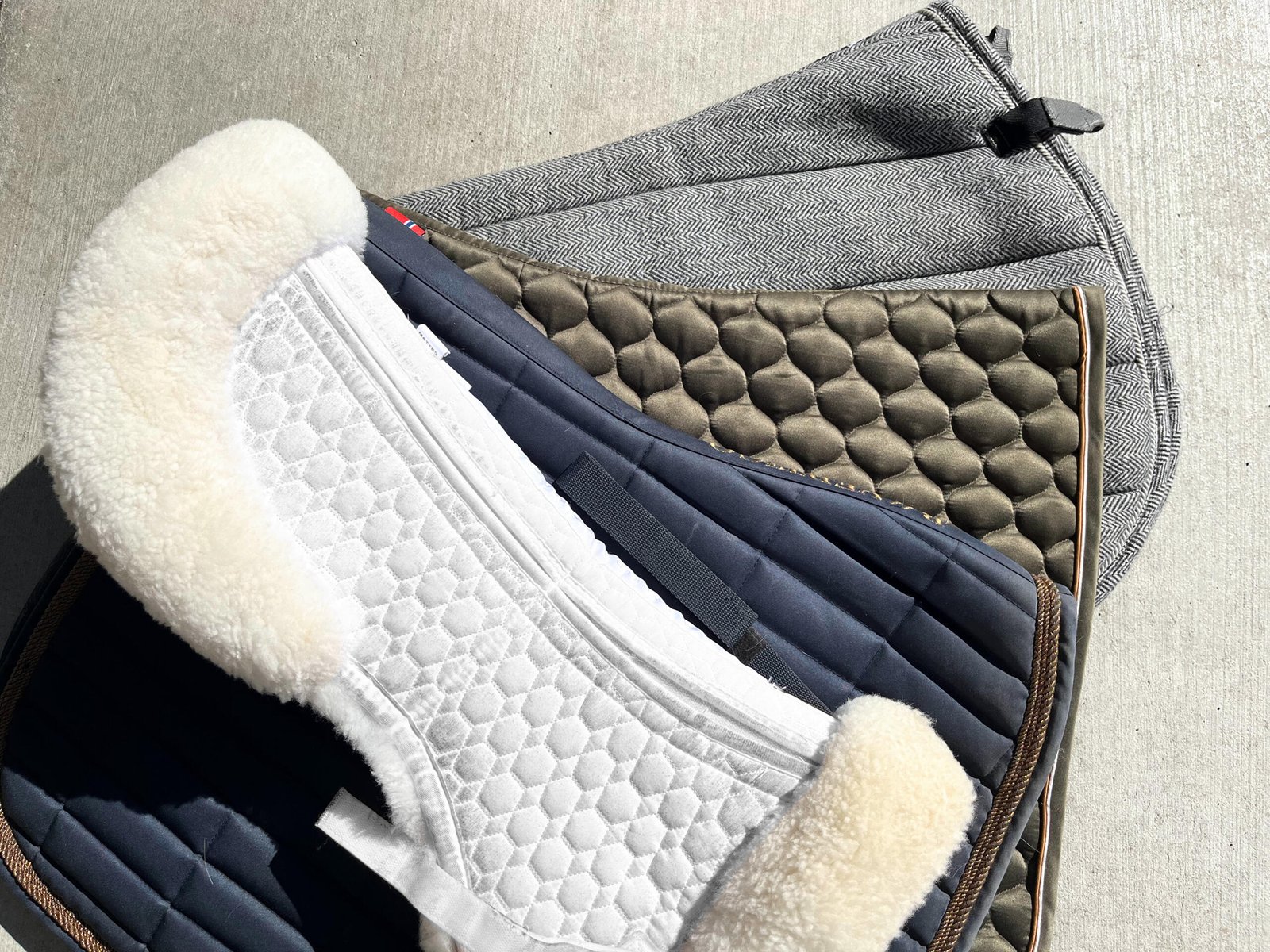Is your tack locker or your car’s trunk full of stiff, crusty saddle pads? Not only do dirty saddle pads smell terrible, but caked-on dirt and hair can cause discomfort for your horse. Cleaning your saddle pads regularly will help them perform well, look great, and last longer. Here are some of our favorite resources and how-tos for maintaining different saddle pads.
Washing Different Styles of Saddle Pad
With the right approach, you can clean quilted English pads, sheepskin pads, wool pads, western pads, and gel pads. Before you clean any saddle pad, read the manufacturer’s washing guidelines for additional insights or special instructions.
- Cleaning Quilted English Saddle Pads
- Maintaining White English Show Pads
- Washing Sheepskin Saddle Pads
- Cleaning Western Pads or Wool Pads
- Restoring Stickiness on Gel Half Pads
Cleaning Quilted English Saddle Pads
Quilted English saddle pads are generally made of cotton, cotton blends, or polyester and have foam or fiber fill. This style of pad is typically easy to clean at home in a few simple steps:
1. Vacuum the pad
Before washing your pad, vacuum it thoroughly to remove excess dirt and hair. This process is easier if you lie the pad flat outside or in a garage and use a car or shop vacuum. Focus your efforts on the underside, but if the fabric on top of the pad is sturdy enough, vacuum that, too!
2. Pre-treat stains
Spray heavy stains with a stain treatment, such as Shout or OxiClean. Let the stain remover sit for a few minutes or gently brush the treated stain with a clean rag to loosen grime.
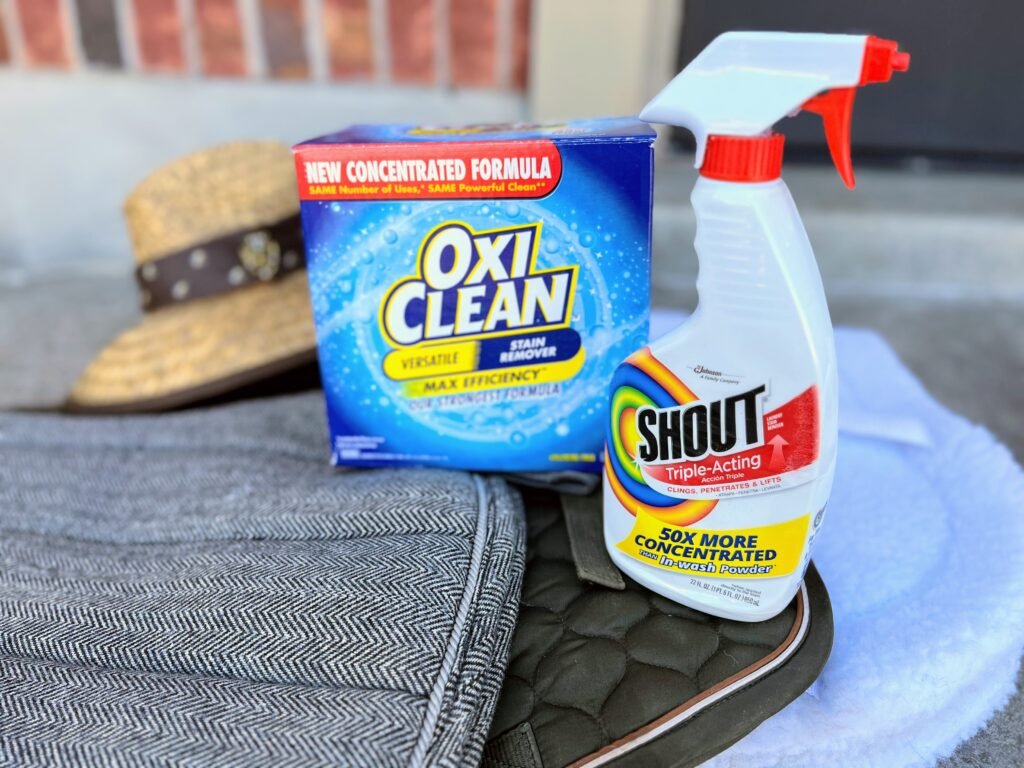
3. Toss the pad in the washing machine
Next, wash your pad in a front-loader washing machine. We recommend washing two pads at a time to help balance the load for the spin cycle. Choose a hypoallergenic detergent to avoid irritating your horse’s skin. You can also add OxiClean Powder to the load for extra cleaning power or pour a splash of distilled white vinegar into your bleach dispenser to fight odors.
Consider using a laundry bag to contain hair, or to protect metal accents on your saddle pads from scratches or other damage. Warm water works great for most pads, but if you’re concerned about shrinking a cotton pad, try a cold-water cycle.
Run the load through an extra rinse cycle if your pad is especially dirty. Once the load has finished, you’ll probably want to wipe out your washing machine to remove loose horsehair before you wash anything else.
4. Hang-dry your pad
Remove your saddle pads from the machine, reshape them, and hang them to dry. If a pad is wrinkled, you can toss it in the dryer for two minutes on low heat first to release creases. Avoid drying pads in direct sunlight, unless they’re white.
Maintaining White English Show Pads
To clean white contoured show pads made of synthetic materials, you can usually use the same washing instructions as for quilted English saddle pads. However, keeping them bright and fluffy may take an extra step or two.
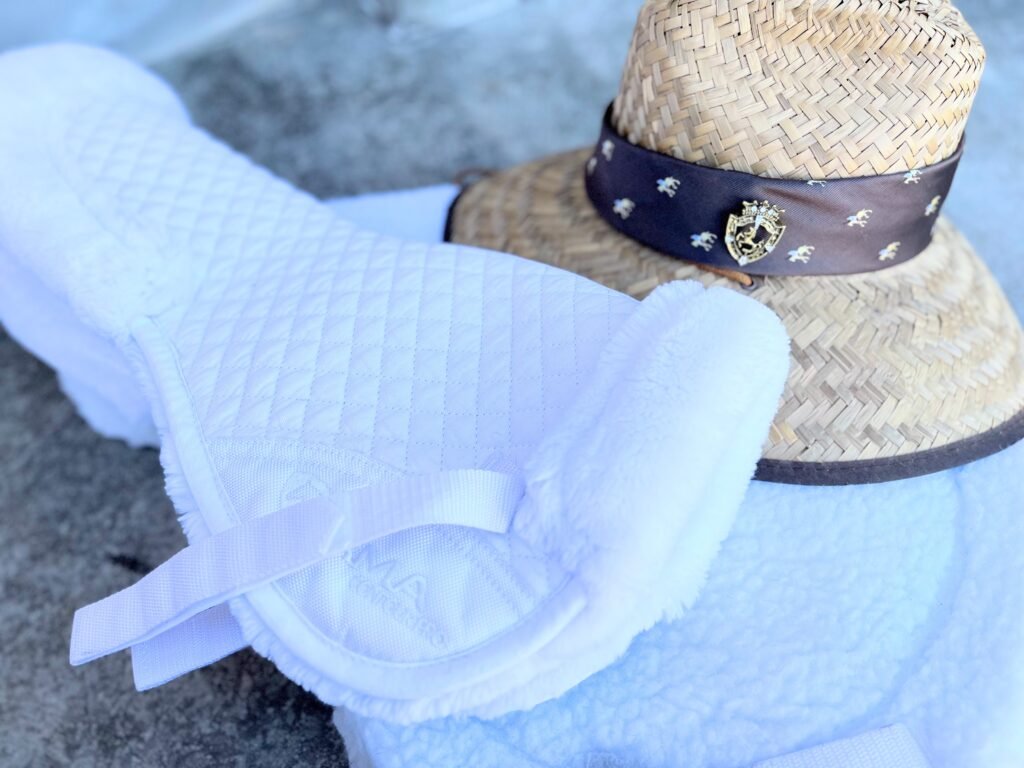
Remove tough stains by treating them overnight. If your standard stain treatment isn’t doing the trick, wet the stained area and rub it with a Zote laundry bar. To brighten the entire pad, soak it in a Borax and water solution or lie the treated pad out in the sun for several hours before you toss it in the wash.
Restoring the matted fluff on a synthetic pad can be tricky, but there are a couple of methods to keep your pad looking great in the show ring. You may need to experiment a little with your particular pad to find what works best.
1. Toss the pad in the dryer without heat
Tumble-dry your pad with the dryer heat turned off for a few minutes to expand and loosen the fluffy fibers. Then, air-dry the pad the rest of the way.
2. Brush the pad’s fibers
Brush the pad with a wire pet grooming brush to separate tangled fibers. Or, try a clean bristle brush for pads with a shorter pile or more delicate fibers.
You can even apply a coat conditioner, such as Show Sheen, to loosen and detangle synthetic fleece fibers, but only use these products on the top of the pad to avoid making the underside slippery.
Washing Sheepskin Saddle Pads
Maintaining sheepskin half pads and contoured pads takes a little more effort, but it can still be done at home. Most sheepskin pads can be hand washed in cold water using a lanolin-containing detergent designed for sheepskin, such as Eucalan or Melp.
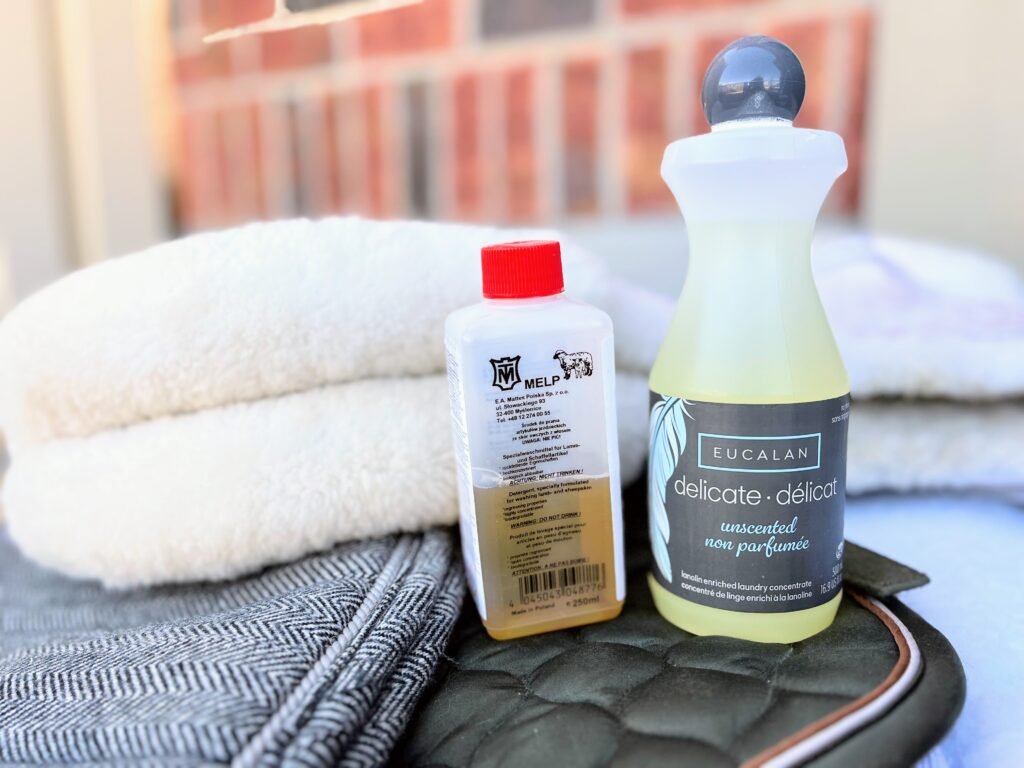
Once you’ve washed the pad, run it through a spin-only cycle two or three times in a front-loading washing machine to desaturate it. Spin a few wet, white towels along with your pad to balance the load. Then, gently squeeze out any remaining water with dry towels. Do not wring or stretch your pad.
Lie the pad out to air dry, reshaping occasionally as needed. The materials may need a full day—or longer—to dry completely, especially if the pad has shim pockets. And, be prepared to endure the odor of wet sheep!
How you clean your pad will vary depending on whether the sheepskin is still attached to the natural hide or if the fleece is attached to a synthetic backing. Read your pad’s specifications carefully to see which kind it is—it’s not always easy to tell just by looking.
Some manufacturers recommend infrequent washing, while others suggest washing regularly so your horse’s sweat doesn’t damage the natural hide. Most manufacturers, such as Fleeceworks, Thinline, and Mattes, have special instructions and detergent recommendations for their particular products, so read your product’s washing instructions and search for tips on the company’s website.
If you need a more detailed tutorial, Heart Equine Academy provides step-by-step instructions for washing different brands of sheepskin pads. Between washings, gently brush your sheepskin pad to remove hair and sweat, and let it dry between uses out of direct sunlight.
Cleaning Western Pads or Wool Pads
Machine washing is not recommended for most western saddle pads and wool pads. However, there are still some great methods to maintain them.
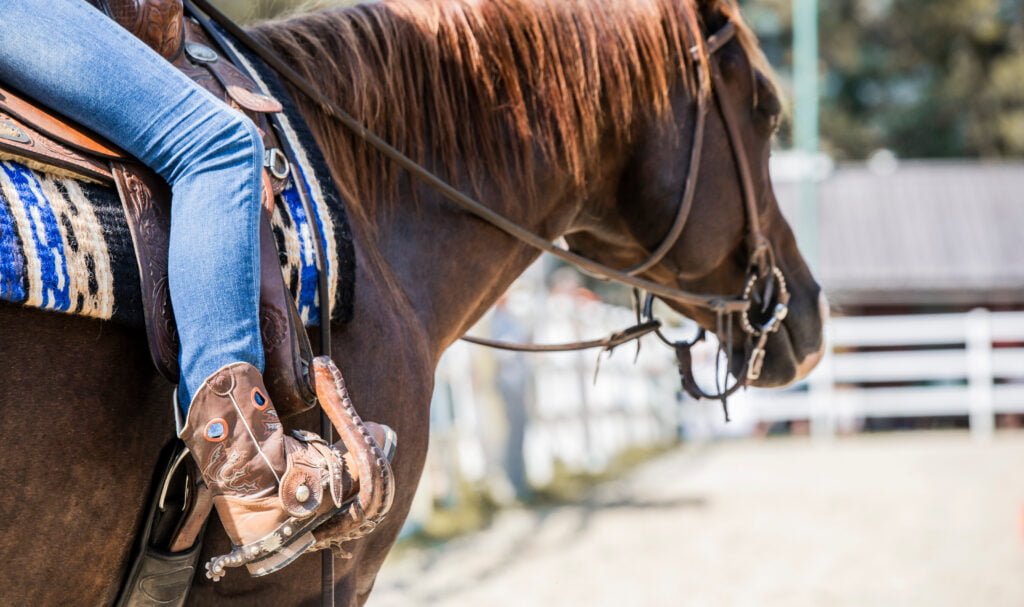
Best Ever Pads suggests loosening hair and dirt with a brush or curry, vacuuming up any debris, and then spraying across the underside of the pad and toward the edges with a garden hose attachment.
They note that it’s important not to spray directly into the pad fibers, as this can embed dirt and hair deeply into the pad. They also caution against hanging a pad with clamps to rinse it, since the weight of the water in the material may stretch and deform the pad.
Many people recommend pressure washing western pads, but keep in mind that especially high pressure may damage a pad’s materials.
Clean and condition leather accents on your pads with products designed for leather to keep it soft and moisturized, just as you would maintain your saddle or other tack.
While most detergents will harm western and wool felt pads, some people have reported that treating their pads with a product specifically designed for this purpose, such as 5-Star Saddle Pad Cleaner and Soak, produces great results. This type of cleaner can be sprayed on before rinsing the pad to remove dirt, soften fibers, and protect natural materials.

Restoring Stickiness on Gel Half Pads
Do you have a gel half pad that’s covered in dust and debris and no longer stays in place? This is easy to fix. Simply bathe the half pad in warm water and mild soap, rinse thoroughly and air dry.
Enjoying a Clean and Effective Saddle Pad
Following these methods to properly maintain your saddle pads provides peace of mind for you and better comfort for your horse. It also keeps your equipment looking its best should you plan to use it in competition or sell it in the future.
We love to provide helpful, easy-to-access information for horse lovers! If you have another method that works well, please share it with us.

